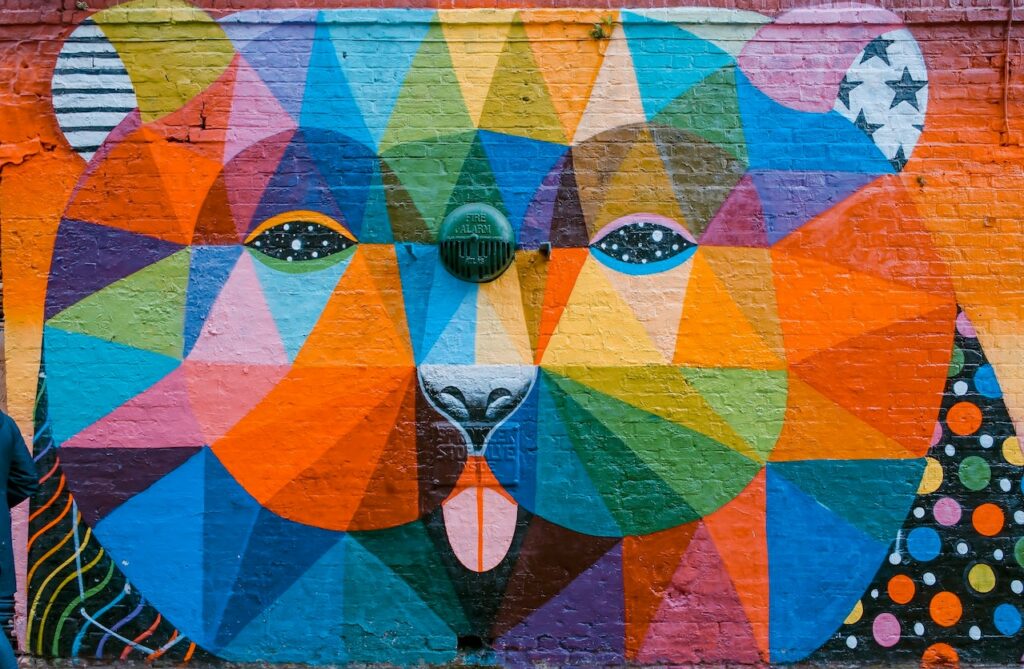
Art Genres and Movements
GENRE IN ART
The concept of genre in art is historically connected to specific ways of organizing and classifying art. A hierarchy of genres was often present in different artistic contexts. Landscapes and still lifes, history painting, and animal portraits are often featured in these classifications. Genre painting was developed in the 17th century in the Netherlands, as part of a fuller hierarchy of genres. It referred to artistic treatments of everyday life, rather than portraits, landscapes, or idealized historical scenery.
From the beginning of the 20th century, new artistic movements broke the hold of the traditional genres. The avant garde left behind both the stylistic requirements and the preferred subject matter of the genres in favor of more ecclectic working methods. Cubism played with existing frameworks, creating mixed media art that left painting behind for collage, and interweaving the art forms and perspectives of different styles. Photography contributed a great deal to the general disruption of painting as the addressee of artistic genres. The photograph introduced new ways of seeing the world. Artistic movements and genres like socialist realism, documentarism, futurism, and hyperrealism would have been inconceivable without the camera.
THE RENAISSANCE
The Renaissance is known as the period during which painting for painting as a fine art began in earnest. In the hands of artists like Michaelangelo, Rubens, and Caravaggio, art was conceived as a way to showcase human achievement, in the subject matter of sculpture, painting, and prints – but also through art as itself an activitiy which gave explicit testimony to human potential.
Mark Seelen’s Dutch Masters series is in this tradition. His still lifes of flowers are reminiscent of oil paintings by Willem Kalf and Pieter Claesz, who were party to the great artistic movement in which art came into its own.
ROCOCO
The Rococo, or Late Baroque period in art, was one during which the aesthetic elements in painting, architecture, sculpture, and other fine arts came to the fore. In European art of the 18th century, ornament was the watchword – and symmetry, verisimilutude, and devotional intent became secondary with respect to the opulence which patrons began to expect from commissioned artworks.
Animal portraits by Andreas Amrhein are redolent of garish and luxuriant Rococo artworks featuring animals. A similar effect is achieved in the works of Catherine Ledner, who creates incomparably fun small-format artworks. On the level of color and style, in-demand prints of paintings by Ysabel Lemay are every bit as opulent, and dense – as busy – as those by the rococo masters.
ROMANTICISM
By the peak of Romanticism, well underway by the middle of the 19th century, artists had made great strides towards the increasing autonomization of art as a discipline with standards that spoke more to the intuitive and impulsive side of the hman experience, leaving behind to some degree the mathematical and religious formalism which informed art beforehand.
Atmospheric, breathy works of art by the photo artist Andreas Chudowski recall the famous testimonial artworks of Caspar David Friedrich, whose dramatic oil paintings stage the human person’s search for spiritual meaning. Santiago’s photography pushes the human further into the distance, placing the observer before a foreground occupied by nature, and the promise of a wandering humanity somewhere off on the horizon.
IMPRESSIONISM
Impressionism, pioneered in the late 19th century by luminaries like Paul Cézanne, Camille Pissaro, and Alfred Sisley, sought to wrest painterly perception away from conventions of realism and representation, and refound them in natural perception. The artists of post impressionism, like Georges Seurat radically changed the way painting is used to portray the world.
EXPRESSIONISM
The prioritization of intense feeling as the goal of art is associated with the famous paintings of Vincent Van Gogh. In the decades around the First World War, European artists, especially in Germany, sought to depict increasingly unmediated spiritual and psychological states. This was the beginning of a long and storied attempt to escape from the Western artistic canon. Ironically, modernism, as a coherent visual lexicon of the canon’s discontents, has become a canon unto itself. In retrospect, then, Expressionism may also be seen as a starting point of modern fine art, as an attempt to finally liberate art from standards seen as exterior to itself, and to refound aesthetic value on new principles, unconstrained by the conventions of the academy and the realism of high culture at the Fin de siècle.
SURREALISM
In terms of shaping our expectations of what a fine artwork should look like – how it should comport itself in terms of style, ambition, and themes – no movement has had a greater effet than Surrealism. While other modernist currents have imparted the feel for anti-representationalism or a cool distance as fundamental virtues of fine art, surrealism has bridged a gap between fine art and popular culture. Mostly unnoticed, by creating realistic depictions in unrealistic arrangements or situations, surrealism opened the door for fine art to take on relevancy as an instrument of consumer aesthetics. But this was bidirectional: it also secured a place for fine art as a practice which participates in popular visual culture.
ABSTRACT
Abstract art is one of the flagship movements of modern art. Consisting in both figurative and non-figurative depictions, and represented by everything from warped and twisted sculpture to the aleatory, or randomized splash painting methods of mid-century abstract expressionism, abstract art has stood for a new mission for art beyond the mere representation of given reality.
The spare, geometrical aesthetics and blocks of color by artists like Sarah Morris and Bernd Uhde are reminiscent of works by pioneers of abstract art like Wasily Kandinsky or Kazimir Malevitch. The original artwork by Beatrice Hug or the sculptor Zaha Hadid emerge from the same will to abstraction seen in the famous abstract paintings of Jasper Johns or Lee Krasner.